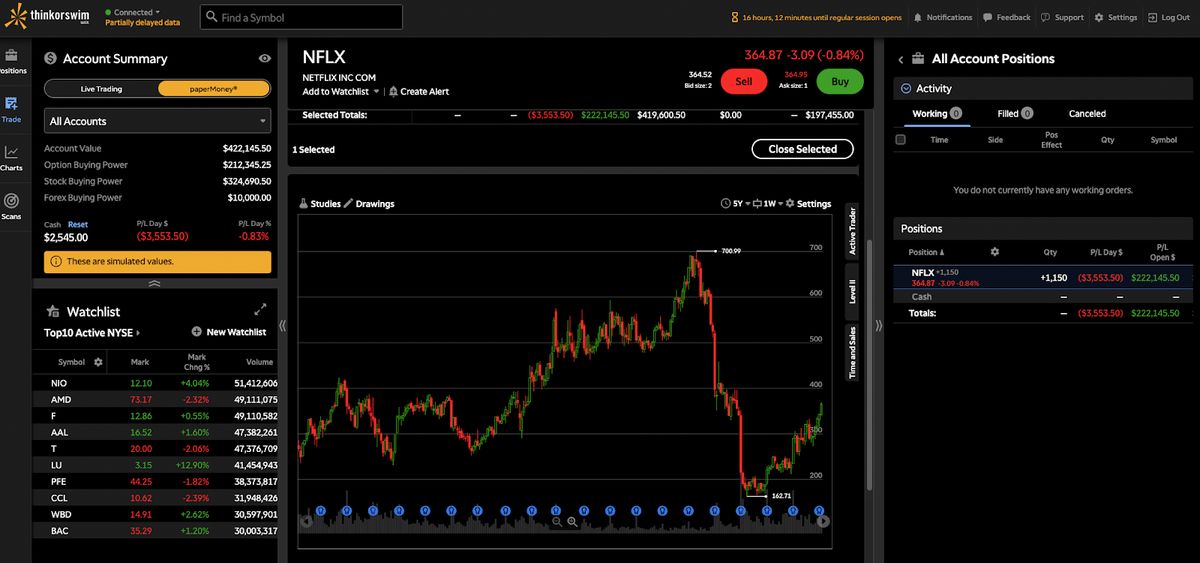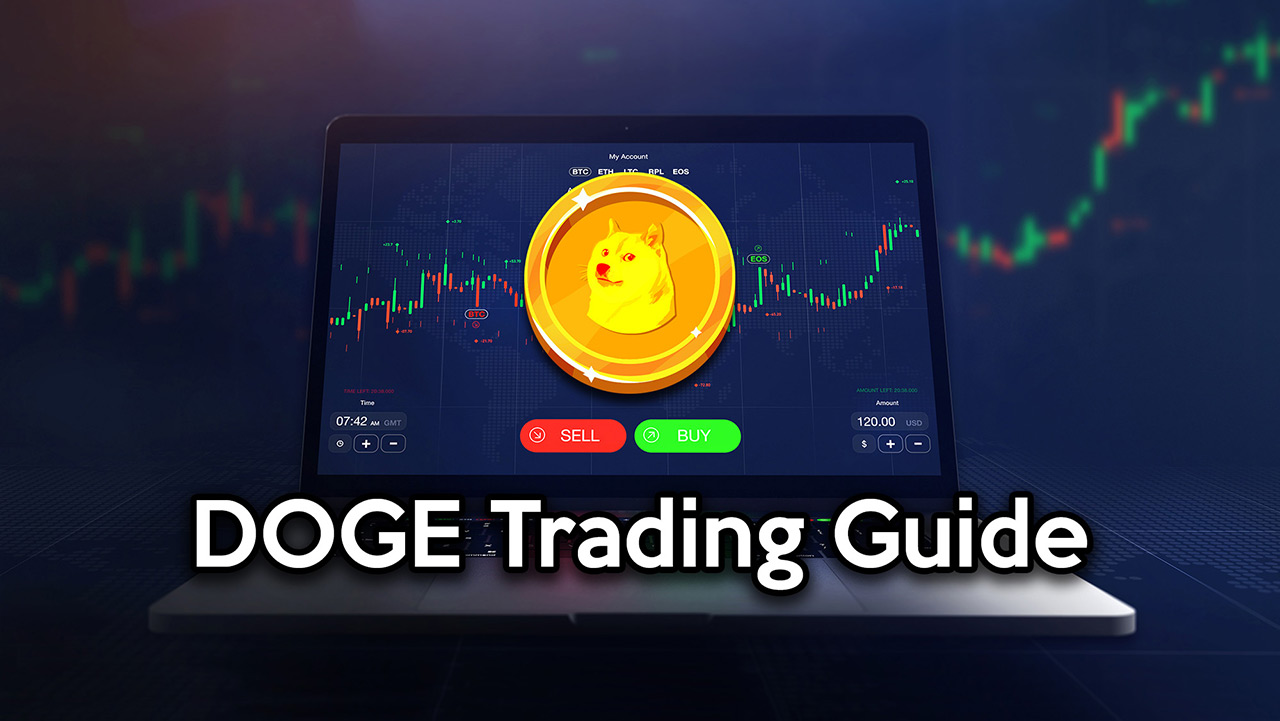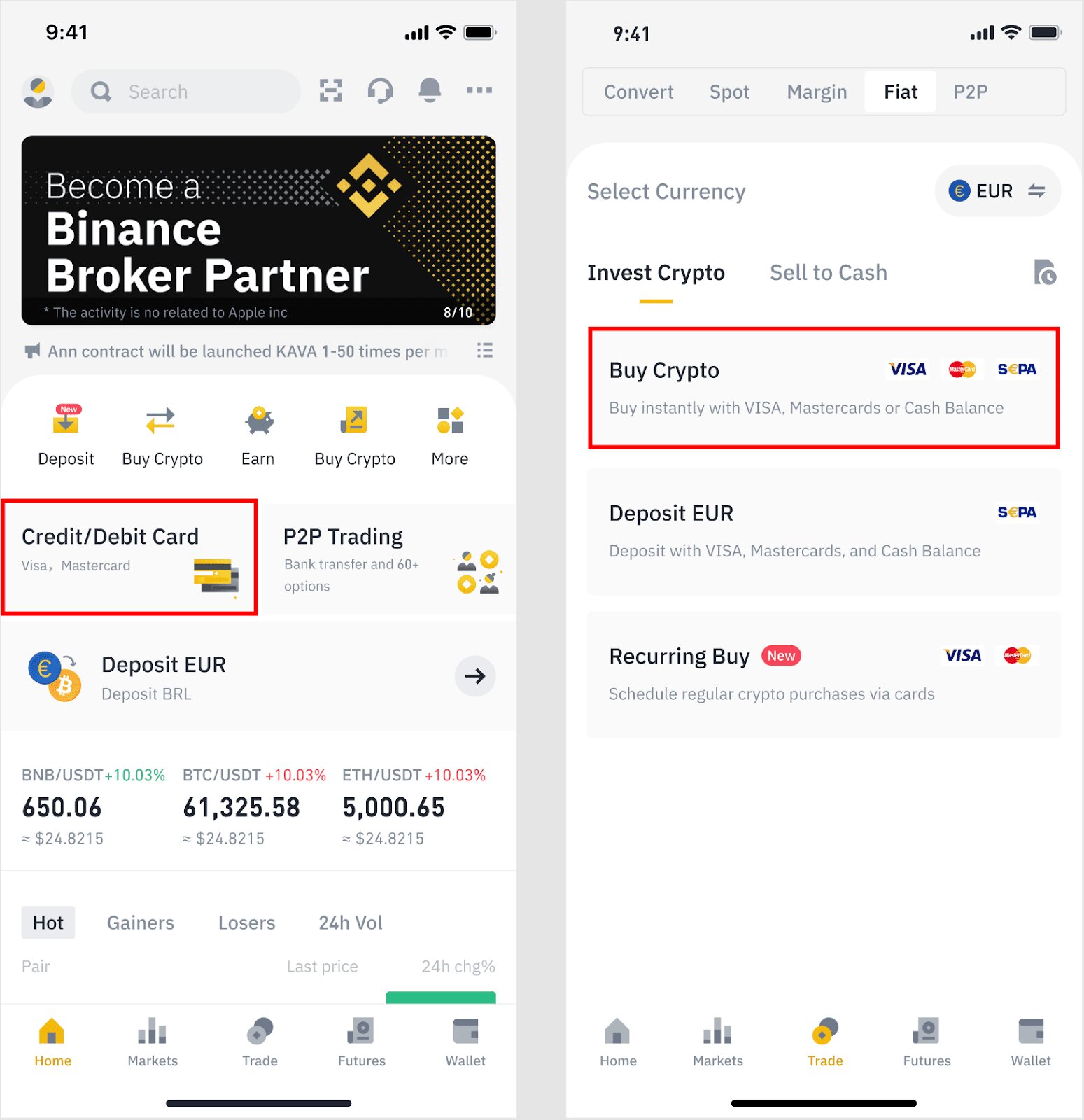Introduction
Choosing the right trading platform is crucial for beginners who are stepping into the world of online trading. With the multitude of options available, it can be overwhelming to identify the best platform that suits your needs. In this article, we will explore the key factors to consider when selecting a trading platform for beginners.
The ideal trading platform for beginners should provide a user-friendly interface that simplifies the trading process and allows easy navigation. Beginners often lack the technical knowledge and experience, so a platform that is intuitive and straightforward is essential. A clean and organized layout with clear instructions can make a significant difference in ensuring a smooth trading experience.
Another important aspect for beginners is access to educational resources. A trading platform with comprehensive educational materials such as tutorials, webinars, and eBooks can help beginners gain a solid foundation in trading concepts. Learning tools like demo accounts, where users can practice trading without risking their own money, are also valuable for beginners to develop their skills and confidence.
Trade execution speed is another crucial factor to consider. Delayed or slow trade execution can lead to missed opportunities or slippage, which can significantly impact trading results. Beginners should look for a platform that offers fast and reliable trade execution to ensure their orders are executed promptly and accurately.
Diversification is vital in trading, and beginners should have access to a wide range of trading instruments. Whether it’s stocks, forex, commodities, or cryptocurrencies, a trading platform that offers a diverse selection of markets allows beginners to explore different assets and find their preferred trading opportunities.
Customer support is also an essential consideration for beginners. It’s crucial to have responsive and helpful customer support available to address any issues or concerns that may arise during the trading process. A platform that offers multiple communication channels, such as live chat, email, or phone support, ensures that beginners can seek assistance whenever necessary.
While considering a trading platform, it is crucial to analyze the cost and fees associated with trading. High fees can eat into profits, especially for beginners who may have limited capital. Look for platforms that offer competitive fees and transparent pricing structures to optimize your trading performance.
Security and regulation should never be overlooked when choosing a trading platform. Beginners should opt for platforms that are regulated by reputable financial authorities, ensuring their funds and personal information are safeguarded. Strong security measures, such as encryption and two-factor authentication, provide an extra layer of protection against potential risks.
In today’s world of mobile technology, having a trading platform with a mobile app is essential. A mobile trading app allows beginners to monitor the markets, execute trades, and manage their portfolios on the go. Look for platforms with user-friendly mobile apps that offer a seamless trading experience on smartphones and tablets.
User-friendly Interface
A trading platform with a user-friendly interface is crucial for beginners as it simplifies the trading process and ensures a smooth user experience. Navigating complex trading screens and understanding technical terms can be challenging for those new to trading, so a platform that is intuitive and easy to use is essential.
An ideal user-friendly interface should have a clean and organized layout, allowing beginners to quickly locate the necessary trading tools and features. Clearly labeled buttons and straightforward instructions help eliminate confusion and reduce the learning curve. Additionally, customizable dashboards and layouts can provide flexibility for users to arrange the platform according to their preferences.
Visual indicators and charts are also essential in a user-friendly interface. Beginners can benefit from clear and easy-to-read charts that help them analyze market trends and make informed trading decisions. Real-time price quotes, order status updates, and customizable watchlists provide relevant and up-to-date information, allowing beginners to stay on top of their trades.
A user-friendly interface should also offer a smooth and efficient order placement process. Beginners should be able to easily select their desired trading instruments, set their order types (such as market orders or limit orders), and specify the quantity they wish to trade. The platform should provide clear confirmation windows and allow users to review and modify their orders before finalizing them.
One important aspect of a user-friendly interface is ease of account management and navigation. Beginners should be able to view their account balance, monitor their trading history, and access important account information without any difficulty. User-friendly interfaces often include clear menu options, account management tabs, and simple transaction processes for deposits and withdrawals.
Moreover, a platform that offers multi-platform compatibility enhances the user-friendly experience. It should be accessible through web browsers, as well as compatible with desktop and mobile operating systems. This allows beginners to seamlessly transition between different devices while still having access to their trading accounts and platform settings.
Finally, a user-friendly interface should provide comprehensive support and educational resources. The platform should offer tutorials, guides, and tooltips to help beginners understand the platform features and trading concepts. An integrated help center or a community forum can also be beneficial for beginners to seek assistance and learn from experienced traders.
Overall, a trading platform with a user-friendly interface can significantly enhance the trading experience for beginners. It reduces the learning curve, simplifies the trading process, and enables beginners to focus on understanding the markets and making informed decisions.
Educational Resources
For beginners venturing into the world of trading, having access to educational resources is crucial to gain a solid foundation and develop their trading skills. The best trading platform for beginners should provide a wide range of educational materials to support their learning journey.
One essential educational resource is comprehensive tutorials. These tutorials should cover the basics of trading, including concepts such as technical analysis, fundamental analysis, risk management, and trading psychology. Beginners can benefit from step-by-step instructions, video tutorials, and interactive quizzes that allow them to grasp the fundamental principles of trading.
Webinars and live training sessions are another valuable educational resource. These interactive sessions provide beginners with the opportunity to learn from experienced traders in real-time. Webinars often cover specific trading strategies, market analysis techniques, and effective risk management practices. Beginners can also participate in Q&A sessions and gain insights from experts.
eBooks and trading guides are excellent resources for in-depth learning. These resources delve into specific trading topics and provide detailed explanations and examples. Beginners can learn about different trading strategies, market indicators, and advanced trading techniques through these written resources. Having access to a diverse range of eBooks and trading guides enables beginners to explore their trading interests and expand their knowledge.
Practicing trading skills is crucial for beginners, and a trading platform that offers a demo account can be extremely valuable. A demo account allows beginners to simulate real-market trading without risking their own money. They can practice executing trades, testing strategies, and understanding the platform’s features in a risk-free environment. Demo accounts help beginners gain hands-on experience and build confidence before venturing into live trading.
Some trading platforms also provide educational communities and social platforms where beginners can interact with other traders. These communities often consist of forums or social trading networks where users can ask questions, share insights, and collaborate with fellow traders. Such communities foster a supportive learning environment and provide beginners with opportunities to benefit from the experiences and perspectives of other traders.
Furthermore, the best trading platforms for beginners go beyond basic education and offer advanced educational resources for those looking to further enhance their trading skills. Advanced courses, mentorship programs, and trading academies can provide in-depth knowledge and guidance for beginners who are dedicated to becoming proficient traders.
Overall, a trading platform that provides comprehensive educational resources caters to the learning needs of beginners. By offering tutorials, webinars, eBooks, demo accounts, and access to a supportive trading community, beginners can acquire the necessary knowledge and skills to navigate the complex world of trading.
Trade Execution Speed
Trade execution speed plays a crucial role in the trading experience, especially for beginners who are new to the markets. When selecting a trading platform, it is important to consider the speed at which trades are executed, as delays or slippage can significantly impact trading outcomes.
Trade execution speed refers to the time taken for a trade to be processed and executed by the trading platform. In fast-moving markets, even a slight delay can result in missed opportunities or unfavorable price movements. Therefore, a trading platform with fast and efficient trade execution is essential for beginners.
One factor affecting trade execution speed is the technology infrastructure of the trading platform. Platforms that have robust and reliable servers, high-speed internet connections, and advanced execution algorithms can process trades swiftly. Additionally, platforms that have established partnerships with reputable liquidity providers can offer faster trade executions.
Low latency connections are another key aspect of trade execution speed. Platforms that are connected to high-speed data networks and have servers located in proximity to major financial hubs can reduce the time it takes for trade orders to reach the market. This is especially important for high-frequency traders who rely on quick order placements.
The responsiveness of the trading platform’s order routing system is also crucial. A trading platform with an efficient order routing system can process and execute trades promptly. Additionally, platforms that offer smart order routing, which automatically selects the best execution venues based on price and liquidity, can further enhance trade execution speed.
It is also important to consider the availability of multiple order types on the trading platform. Limit orders and stop orders, for example, allow traders to set specific price points at which they want to buy or sell a security. The trading platform should execute these orders accurately and swiftly when the specified price levels are reached in the market.
Another consideration for trade execution speed is the platform’s capacity to handle high trading volumes. During periods of high market activity, such as economic news releases or major market events, trading volumes can spike. A trading platform that can handle increased trading volumes without significant delays or slowdowns ensures uninterrupted trade execution.
Real-time market data is also relevant to trade execution speed. Platforms that provide up-to-date and accurate market data allow traders to make informed decisions and execute trades at the best possible prices. The availability of real-time price quotes, market depth information, and order book data enables beginners to react quickly to market movements.
Overall, trade execution speed is a critical factor to consider when choosing a trading platform for beginners. A platform with fast execution speeds, low latency connections, efficient order routing, and high capacity for trading volumes can help beginners capitalize on trading opportunities and improve their overall trading results.
Range of Trading Instruments
When evaluating trading platforms for beginners, it is important to consider the range of trading instruments available. A diverse selection of trading instruments allows beginners to explore different markets and find opportunities that align with their trading preferences and strategies.
An ideal trading platform should offer a wide range of asset classes, including stocks, forex, commodities, cryptocurrencies, and indices. This allows beginners to diversify their portfolios and take advantage of various market conditions and trends. Having access to a broad range of trading instruments ensures that beginners can stay engaged in the markets and adapt to changing market dynamics.
Stocks are often a popular choice for beginners. A trading platform that provides access to a variety of stocks from different markets allows beginners to invest in companies they are familiar with or have researched. The ability to trade stocks from major exchanges globally provides the opportunity for beginners to take advantage of international markets.
Forex (foreign exchange) trading is another market that provides abundant opportunities for beginners. A trading platform with a wide range of currency pairs enables beginners to take advantage of fluctuations in currency exchange rates. The forex market operates 24/7, making it accessible and appealing to traders from various time zones.
Commodities, such as gold, oil, and agricultural products, are also attractive trading instruments. A platform that offers a range of commodities allows beginners to diversify their portfolios and take advantage of price movements driven by factors such as global supply and demand, geopolitical events, and economic indicators.
With the rise in popularity of cryptocurrencies, having access to a range of digital assets on a trading platform is essential. Beginners can leverage the volatility and potential returns of cryptocurrencies like Bitcoin, Ethereum, and Litecoin. A platform that offers a variety of cryptocurrencies allows beginners to explore different coins and trade based on their market outlook.
Indices are another important trading instrument for beginners. These are baskets of stocks that represent a specific market or sector. Trading indices allows beginners to gain exposure to the overall performance of a market or a particular industry without having to buy individual stocks. A platform that offers a variety of global indices provides ample opportunities for beginners to diversify their trading strategies.
In addition to the range of trading instruments, a trading platform should also offer access to various trading products. For example, beginners may benefit from features like options trading, futures trading, or contract for difference (CFD) trading. These products offer different risk and reward profiles and provide opportunities for beginners to diversify their trading strategies.
Having the ability to trade on margin is another consideration when evaluating the range of trading instruments. Margin trading allows beginners to amplify their trading positions by borrowing funds from the trading platform. This can be a valuable tool for those looking to maximize their trading opportunities and potential returns.
Overall, the best trading platform for beginners should provide a wide range of trading instruments that encompass different asset classes and products. This allows beginners to explore and diversify their trading strategies while catering to their individual preferences and risk tolerance levels.
Customer Support
Customer support is a critical aspect to consider when selecting a trading platform, especially for beginners who may encounter technical issues or have questions regarding the platform and trading process. A platform with responsive and helpful customer support ensures that beginners can receive timely assistance and guidance whenever needed.
Effective customer support should offer various channels of communication, such as live chat, email, or phone support. Beginners should have the flexibility to reach out to the support team through their preferred method, allowing for quick and convenient access to assistance. Response times should be prompt, with a dedicated support team available to address inquiries and resolve issues efficiently.
Knowledgeable and well-trained support staff is crucial for providing accurate and helpful assistance. The support team should possess a deep understanding of the platform’s features, trading concepts, and common issues that beginners may encounter. They should be able to provide clear explanations and guide beginners through any difficulties they may face while using the platform.
Responsive customer support should extend beyond technical assistance and encompass broader trading-related inquiries. Beginners may have questions about account setup, deposit and withdrawal processes, or general trading queries. A trading platform with comprehensive customer support can provide guidance and clarification on these matters, helping beginners navigate the trading process with confidence.
In addition to direct support channels, an extensive knowledge base or FAQ section on the trading platform’s website is valuable for beginners. This resource should cover common questions, troubleshooting tips, and educational materials. A well-organized knowledge base can empower beginners to find answers to their queries independently, saving time and effort for both the traders and the support team.
Another aspect to consider is the availability of multilingual support. Beginners from different regions and countries may prefer communicating in their native language. A trading platform that offers multilingual support ensures that language barriers do not hinder effective communication and assistance.
Furthermore, the accessibility of customer support is essential. The availability of support during trading hours in different time zones allows beginners to reach out for assistance whenever they need it. Trading platforms that provide 24/7 customer support or extended support hours cater to the diverse needs of global traders.
Testimonials and reviews from existing customers can provide insights into the quality of customer support provided by a trading platform. Positive feedback regarding the responsiveness, professionalism, and effectiveness of the support team is an indication of reliable customer service.
Ultimately, a trading platform that values customer support demonstrates its commitment to ensuring an optimal trading experience for beginners. By offering accessible and knowledgeable support through various communication channels, a trading platform builds trust and provides the necessary guidance for beginners to navigate the platform and address any potential challenges that may arise.
Cost and Fees
When selecting a trading platform, it’s essential to consider the cost and fees associated with trading. Understanding the cost structure ensures that beginners can make informed decisions and optimize their trading performance while minimizing expenses.
Trading platforms may have different fee structures, so it’s important to evaluate the various costs involved. The most common fees include commissions, spreads, financing charges, and withdrawal fees. These costs can vary based on the trading instrument, account type, and trading volume.
Commissions are charges imposed on each trade executed on the platform. Some platforms charge a fixed fee per trade, while others have a percentage-based commission. Beginners should assess the commission structure and compare it to their trading strategy to determine its impact on their overall profitability.
Spreads are another cost component to consider. Spreads represent the difference between the buying and selling price of a trading instrument. A trading platform with tight spreads can be favorable for beginners, as it means lower costs for entering and exiting trades. Paying attention to the average spread and any spread variations during different market conditions is important.
Financing charges or overnight fees may apply to trades held overnight. These charges are incurred when traders hold leveraged positions beyond a specified time. Beginners should consider these charges when engaging in longer-term trades and factor them into their risk management strategies.
Withdrawal fees are incurred when moving funds from the trading platform to a bank account. Different platforms have varying withdrawal fee structures, and beginners should be aware of any charges involved. Evaluating the withdrawal options and associated costs ensures that beginners can efficiently manage their funds.
In addition to these direct costs, beginners should also be aware of any hidden fees or inactivity fees that may be imposed by the trading platform. Hidden fees, such as data fees or account maintenance fees, can accumulate over time and impact trading profitability. Inactivity fees are typically charged when an account remains dormant for a specified period.
Consideration should also be given to the account types offered by the trading platform. Some platforms offer different account tiers with varying fee structures and additional features. Beginners should assess the costs and benefits of each account type to determine the most suitable option for their trading needs and budget.
It is important to note that while cost and fees are significant considerations for beginners, they should not be the sole determining factor. It’s crucial to strike a balance between low costs and the quality of the trading platform, including factors such as reliability, customer support, and trading tools provided.
Comparing the costs and fees of different trading platforms can help beginners make an informed decision that aligns with their trading goals and budget. Understanding the cost structure empowers beginners to plan their trading strategies effectively and manage their trading costs to optimize their overall trading performance.
Security and Regulation
Ensuring the security of funds and personal information is paramount when selecting a trading platform for beginners. Security measures and regulation play a crucial role in establishing trust and protecting users from potential risks in the online trading environment.
One key aspect to consider is the regulatory status of the trading platform. Reputable trading platforms are typically regulated by recognized financial authorities, which enforce strict rules and regulations to protect investors. Regulatory bodies such as the Financial Conduct Authority (FCA), the Securities and Exchange Commission (SEC), or the Australian Securities and Investments Commission (ASIC) oversee the operations of trading platforms and ensure they adhere to fair practices and compliance standards.
Platforms that are regulated must meet stringent requirements in terms of financial stability, client fund segregation, and transparency. This ensures that client funds are kept separate from the platform’s operational funds, reducing the risk of misappropriation or mismanagement. Beginners should prioritize trading platforms that are regulated by reputable authorities to ensure their funds are safeguarded.
Security measures implemented by the trading platform are essential in protecting user data and account information from unauthorized access. The platform should employ state-of-the-art encryption techniques to secure data transmission and storage. Two-factor authentication (2FA) is another crucial security feature that adds an extra layer of protection by requiring an additional verification step to ensure only authorized individuals can access the trading account.
It is also important to consider the platform’s track record and reputation in terms of security incidents or breaches. A thorough review of customer feedback and online testimonials can provide insights into the platform’s security performance. Any issues or incidents related to data breaches or unauthorized access should be taken seriously and carefully evaluated.
Additional security measures, such as firewall protection, intrusion detection systems, and regular security audits, demonstrate the platform’s commitment to maintaining a secure trading environment. Beginners should look for trading platforms that have a robust and comprehensive security infrastructure in place.
Transparency and disclosure are important factors when evaluating a trading platform’s security and regulation. Platforms that are open and transparent about their compliance, security protocols, and privacy policies instill confidence in users. Providing clear and easily accessible information about regulatory affiliations, security measures, and data protection practices contributes to a secure and trustworthy trading environment.
Lastly, it’s crucial to be cautious of unregulated or offshore trading platforms that may not offer the same level of security and protection as regulated platforms. While they may appear to offer attractive features or lower costs, the risks associated with unregulated platforms may outweigh the benefits, especially for beginners.
By selecting a trading platform that emphasizes security and operates under strict regulation, beginners can have peace of mind knowing that their funds and personal information are protected. Prioritizing security measures, regulatory compliance, and transparency ensures a safe trading environment and minimizes the potential risks associated with online trading.
Mobile Trading App
In today’s fast-paced and technology-driven world, having a mobile trading app is essential for beginners to stay connected to the markets and manage their trades on the go. A robust and user-friendly mobile trading app enhances the flexibility and convenience of trading, allowing beginners to access their accounts and execute trades from their smartphones or tablets.
A mobile trading app should offer a seamless and intuitive user experience. It should have a clean and organized interface that allows beginners to navigate easily and locate the necessary trading tools and features. The app should provide a similar experience to the desktop platform, offering essential functionalities such as real-time market data, charting tools, and order placement options.
Real-time market data is vital in a mobile trading app. Beginners should have access to live price quotes, real-time news updates, and market analysis tools to make informed trading decisions. The ability to receive push notifications regarding significant market movements or trade executions helps beginners stay updated and react quickly to market events.
Efficient order placement is another crucial feature of a mobile trading app. Beginners should be able to execute trades quickly and easily, with options to set order types, specify trade quantities, and manage stop-loss and take-profit levels. The app should provide real-time order status updates and confirmations to ensure transparency and accountability.
Charting capabilities are essential in a mobile trading app. Beginners should have access to a variety of technical indicators and drawing tools to analyze market trends and identify potential trading opportunities. The ability to customize chart settings and save preferred chart templates can enhance the trading experience and allow beginners to utilize their preferred technical analysis methods.
Account management functionalities should also be available in the mobile trading app. Beginners should be able to view their account balances, monitor trade history, and access important account information without difficulty. The app should provide a secure and hassle-free process for deposits, withdrawals, and account transfers.
Security is a critical consideration in a mobile trading app. The app should incorporate robust security measures, such as encryption and two-factor authentication, to protect user data and prevent unauthorized access. The ability to remotely lock or disable the app in case of a lost or stolen device adds an additional layer of security.
Integration with the desktop trading platform is another valuable feature that enhances the usability of a mobile trading app. Beginners should be able to seamlessly switch between devices and have consistent access to their trading accounts, portfolios, and settings. Syncing watchlists, preferences, and alerts across devices ensures a seamless trading experience across different platforms.
Regular updates and improvements to the mobile trading app also indicate the commitment of the trading platform to providing a reliable and user-friendly experience. Ongoing development and bug fixes ensure that the app remains functional and optimized for the latest operating systems and device technologies.
Overall, a robust and feature-rich mobile trading app allows beginners to stay connected to the markets and manage their trades conveniently from anywhere. By providing a user-friendly interface, real-time market data, efficient order placement, comprehensive charting tools, secure account management, and seamless integration with the desktop platform, a mobile trading app enhances the flexibility and accessibility of trading for beginners.
Demo Account
A demo account is a valuable tool for beginners to practice trading strategies, familiarize themselves with the trading platform, and gain hands-on experience without risking real money. A trading platform that offers a demo account provides beginners with a risk-free environment to refine their skills and build confidence before venturing into live trading.
A demo account replicates the live trading environment but operates with virtual funds. Beginners can access real-time market data, utilize trading tools and features, and execute trades as they would in a live account. This allows them to understand how the platform functions and test different trading strategies without the fear of financial loss.
By using a demo account, beginners can gain a deeper understanding of various order types, such as market orders, limit orders, and stop orders. They can practice opening and closing positions, setting stop-loss and take-profit levels, and managing risk. This hands-on experience helps beginners develop a solid foundation in executing trades effectively.
A demo account also enables beginners to explore different trading instruments available on the platform. They can experiment with trading stocks, forex, commodities, or cryptocurrencies and assess which markets align with their trading preferences and strategies. This knowledge is crucial in selecting the most suitable assets when they move on to live trading.
One of the significant advantages of a demo account is the ability to test and refine trading strategies in a risk-free environment. Beginners can experiment with different technical indicators, test various timeframes, and apply different trading methodologies. They can analyze the performance of their strategies and make adjustments without the fear of losing real money.
Furthermore, a demo account also allows beginners to assess the performance and reliability of the trading platform itself. They can evaluate the speed of trade execution, the availability of market data, the functionality of charting tools, and the overall user experience. This enables them to make an informed decision about whether the platform meets their trading needs before committing real funds.
It is important to note that while trading on a demo account can simulate real-market conditions, it does not fully replicate the psychological and emotional aspects of live trading. However, the experience gained from a demo account can help beginners develop discipline, learn from mistakes, and understand the importance of risk management.
Some trading platforms also offer additional educational resources specifically tailored to the demo account users. This can include tutorials, webinars, or educational articles that help beginners maximize the benefits of demo trading and accelerate their learning process.
Ultimately, a demo account is an indispensable tool for beginners to gain practical experience, test trading strategies, and familiarize themselves with the trading platform in a risk-free setting. By utilizing a demo account effectively, beginners can enhance their trading skills, develop confidence, and make better-informed decisions when they transition to live trading.
Integrations and Automation Tools
Integrations and automation tools are valuable features for beginner traders, as they can enhance efficiency, streamline trading processes, and save time. A trading platform that offers integrations with third-party applications and automation tools provides beginners with additional functionality and opportunities to optimize their trading strategies.
Integrations with market analysis tools, charting software, and research platforms can provide beginners with a wealth of information and insights. These integrations allow traders to access a wide range of technical indicators, advanced charting capabilities, and in-depth market analysis. By incorporating these tools, beginners can make more informed trading decisions and identify potential trading opportunities.
Integration with news aggregators and economic calendars is another valuable feature. Beginners can stay updated with the latest news, economic events, and market announcements that may impact their trades. By receiving real-time news alerts and event notifications, beginners can react quickly and adjust their trading strategies accordingly.
Some trading platforms also offer social trading integrations, which enable beginners to follow and copy the trades of experienced traders. This feature allows beginners to learn from successful traders and potentially replicate their trading strategies. Social trading integrations can be beneficial for beginners who are looking to gain insights, learn from more experienced traders, and accelerate their learning curve.
An automation tool, such as algorithmic trading or expert advisors (EAs), can be a powerful asset for beginners. These tools allow traders to create and implement pre-defined trading strategies based on specific criteria or conditions. With the help of automation, beginners can execute trades automatically, without manual intervention, which can be particularly useful during times when they may not be able to closely monitor the markets.
Automation tools can also assist beginners in managing risk. They can incorporate stop-loss orders or take-profit levels automatically, ensuring that trades are closed at predetermined price levels. By automating risk management strategies, beginners can remove emotions from their trading decisions and adhere to pre-established risk parameters.
Furthermore, integration with backtesting software is valuable for beginners to evaluate the performance of their trading strategies using historical data. Backtesting allows traders to assess the viability and profitability of their strategies before implementing them in live trading. It helps beginners identify potential weaknesses or areas for improvement in their trading approach.
It’s important for beginners to choose a trading platform that offers seamless integration and compatibility with external applications and automation tools. A user-friendly interface and easy setup process for integrations ensure a smooth user experience and facilitate quick adoption of third-party tools.
However, it’s essential to be cautious when using automation tools and integrations. Beginners should thoroughly understand the functionalities and risks associated with these tools before implementing them. Testing strategies on a demo account and continually monitoring their performance is important to ensure the desired results.
In summary, a trading platform that offers integrations with various tools and automation features can greatly benefit beginners. By providing access to market analysis tools, news aggregators, social trading integrations, and automation tools, traders gain additional resources to enhance their decision-making processes, streamline their trading activities, and potentially improve their trading results.
Social Trading Features
Social trading is a popular concept that allows beginner traders to connect with and learn from experienced traders. A trading platform that offers social trading features provides beginners with a unique opportunity to observe, interact, and even replicate the trades of successful traders, thereby accelerating their learning curve and potentially improving their trading results.
One key feature of social trading is the ability to follow and monitor the performance of experienced traders. Beginners can access profiles of successful traders, view their trading history, and analyze their past performance. By studying the trading strategies, risk management techniques, and overall trading approach of these successful traders, beginners can gain insights and form a better understanding of how to navigate the markets effectively.
Some social trading platforms allow beginners to automatically copy the trades of experienced traders. This feature, known as copy trading, enables beginners to mirror the trades made by a chosen trader in their own trading account. Copy trading eliminates the need for beginners to make independent trading decisions, as they can rely on the expertise of established traders to guide their trading activities.
Copy trading is particularly beneficial for beginners as it allows them to diversify their trading portfolios and gain exposure to different markets and trading instruments. By copying trades of successful traders who specialize in various markets or asset classes, beginners can broaden their trading horizons and potentially benefit from a wider range of trading opportunities.
Furthermore, social trading platforms often provide interactive features that facilitate communication and collaboration among traders. Beginners can engage in discussions, share insights, and ask questions to experienced traders and other community members. This social interaction creates a supportive learning environment where beginners can seek guidance, exchange ideas, and gain perspectives from traders with different backgrounds and experiences.
Transparency is an essential aspect of social trading. Trading platforms that offer social trading features often provide performance statistics and rankings of traders. This enables beginners to assess the track records and reliability of experienced traders before deciding to follow or copy their trades. Transparent information about traders’ success rates, risk ratios, and trade frequency allows beginners to make informed decisions while selecting traders to follow or replicate.
Risk management is also crucial in social trading. Beginners should consider the risk management practices employed by the traders they choose to follow or copy. It is important to understand the risk levels associated with each trader’s portfolio and adjust the copied trades accordingly to manage risk effectively.
While social trading can be a valuable learning tool, beginners should still exercise caution and conduct due diligence. It is essential to carefully assess the performance, trading strategies, and risk profiles of experienced traders. Beginners should also be aware that past performance is not indicative of future results and that social trading involves inherent risks.
In summary, social trading features offer beginner traders the opportunity to learn from and interact with experienced traders in a collaborative community. By following or copying successful traders, beginners can gain insights, expand their trading knowledge, and potentially improve their own trading performance. However, it’s important to carefully evaluate the traders’ performance, manage risks effectively, and continuously update strategies to ensure long-term success in social trading.
Conclusion
Choosing the best trading platform for beginners involves considering several key factors. A user-friendly interface simplifies the trading process, ensuring beginners can navigate the platform with ease. Access to educational resources, such as tutorials, webinars, and demo accounts, provides beginners with the knowledge and confidence needed to navigate the markets successfully.
The trade execution speed of a platform is crucial to avoid missed opportunities or slippage. A wide range of trading instruments enables beginners to diversify their portfolios and explore different markets. Reliable customer support is essential for addressing inquiries and concerns that beginners may have during their trading journey.
Considering the cost and fees associated with trading ensures that beginners optimize their trading performance and manage their expenses effectively. Security and regulation are vital for safeguarding funds and personal information. A mobile trading app allows beginners to trade on the go, while integrations and automation tools enhance efficiency and streamline trading processes.
Social trading features provide beginners with the opportunity to learn from experienced traders and potentially replicate their success. Ultimately, the best trading platform for beginners encompasses a combination of these features, tailored to suit individual preferences and trading goals.
It is crucial for beginners to thoroughly evaluate and test different trading platforms before making a decision. Each platform may offer a unique combination of features and benefits, so it’s important to prioritize those that align with individual trading needs and preferences. Taking advantage of free trials, demo accounts, and research can help beginners make an informed choice.
Remember, as a beginner, it’s important to educate yourself, remain disciplined, and always manage risk effectively. Trading involves inherent risks, and no platform or feature can guarantee profits. By continuously learning, adapting strategies, and maintaining a prudent approach, beginners can navigate the markets confidently and work towards achieving their trading goals.

























